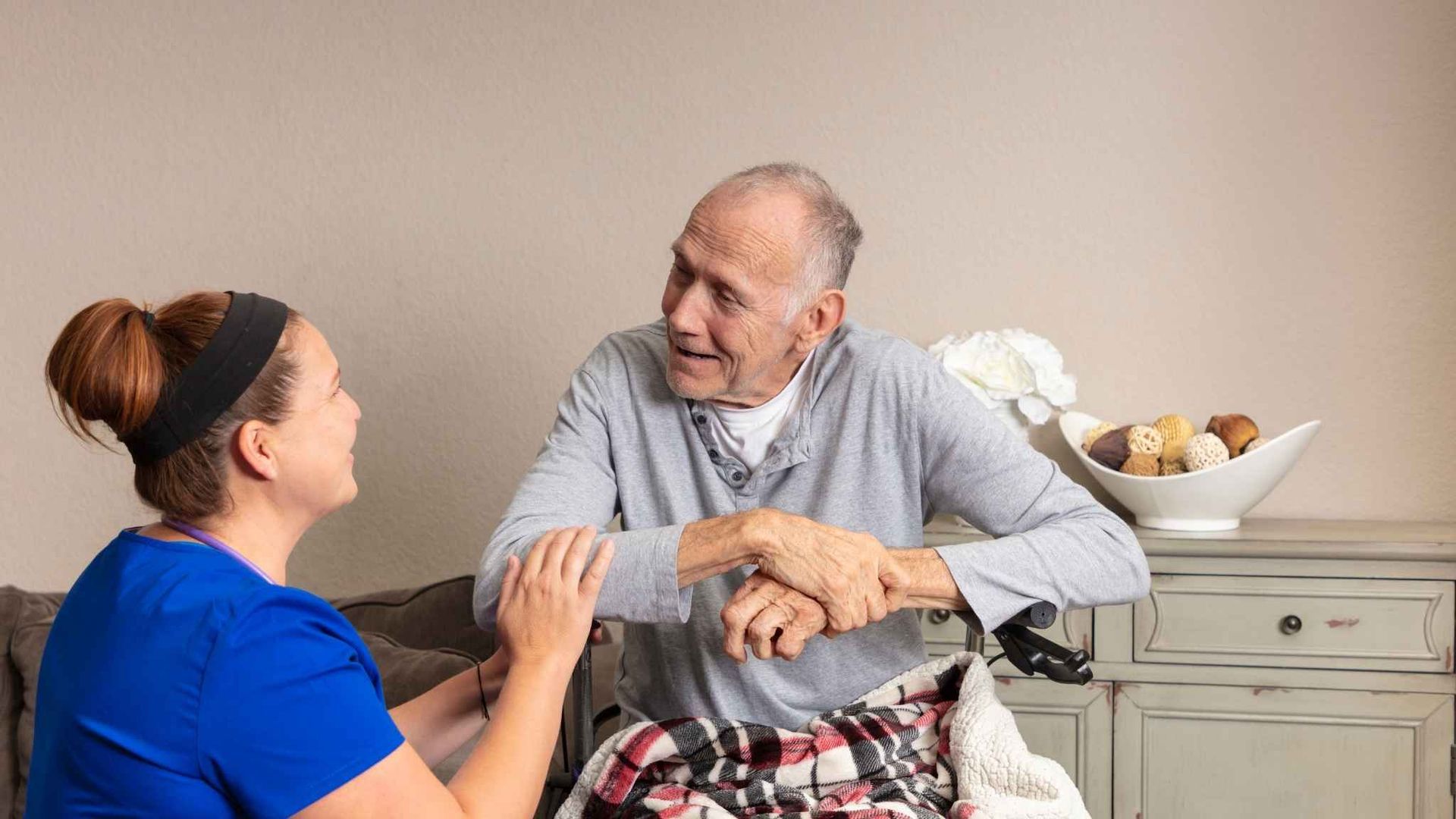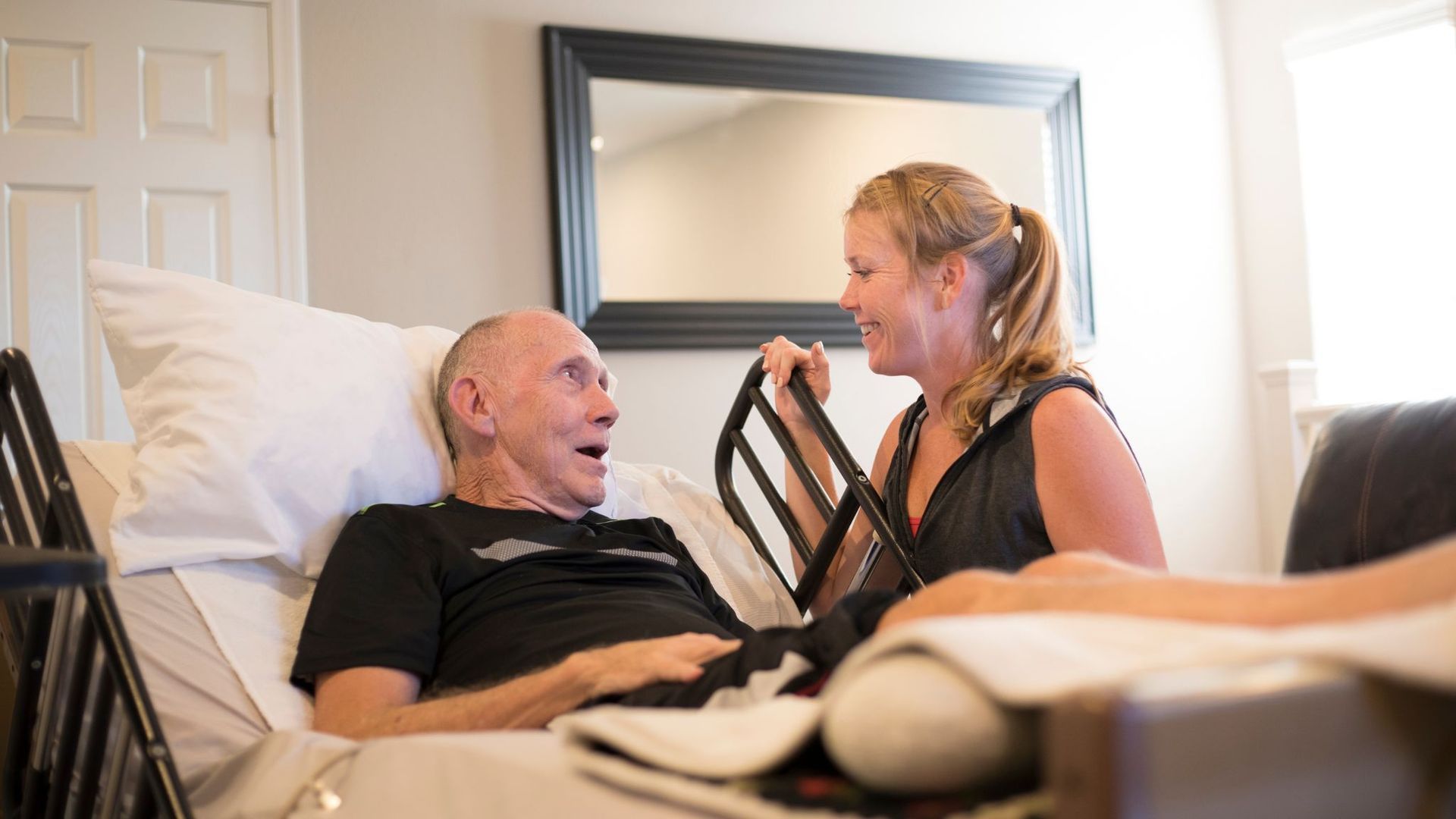How to Get Hospice Care at Home
If you’re caring for a loved one with a terminal illness, you may be thinking about how to make their final months as comfortable as possible. For many families, that means choosing to receive hospice care at home.
Home hospice services are widely available across the United States. In fact, according to a
National Hospice and Palliative Care Organization report in 2023, the majority of hospice care days and payments fell under Routine Home Care, which is most commonly delivered in the patient’s home. Many insurance plans, such as the widely available Medicare and Medicaid, cover in-home hospice care when your loved one meets the eligibility requirements.
This article will walk you through how to get hospice care at home. It covers who qualifies, an exact step-by-step process to take, and what families can expect once care begins.
What Is Hospice Care at Home?
In-home hospice care is designed for people facing a terminal illness who want to spend their final months at home. Instead of focusing on a cure, the care they receive is focused on comfort, dignity, and giving them more time with their loved ones.
With home hospice services, a team comes to where the patient lives and helps manage their symptoms with medication, reduce pain, and offer emotional or spiritual support. This usually includes regular nurse visits, help with tasks like bathing or dressing, and time to talk about their concerns with the hospice team.
The hospice care process also supports family members. Many family members help with the day-to-day care, with guidance from professionals who understand what their loved one needs.
Who Is Eligible for Hospice Care at Home?
To start home hospice services, a person must meet specific eligibility requirements. According to Medicare, these include:
- Certification from a hospice doctor that they have a terminal diagnosis
- The patient’s choice of comfort-focused care instead of care to cure their illness
In most cases, patients have been diagnosed with a terminal illness and have a life expectancy of six months or less if the illness follows its usual course without medication.
A doctor must confirm this through a medical evaluation. Once approved, the patient will need to choose comfort instead of other treatments.
Qualifying for hospice care also depends on what type of insurance your loved one may have. Medicare, Medicaid, and other private insurance plans cover hospice care as long as the patient meets the clinical guidelines.
Step 1 – Talk to the Patient’s Doctor
Starting the hospice care process at home usually begins with a conversation. If you’re considering this path for your loved one, speak with their primary care doctor or specialist first. Their physician plays an important role in confirming if hospice is the right fit for them, and helps guide the family on what comes next if it is.
To begin hospice services, patients usually need a formal referral. This referral confirms that the
patient meets the clinical criteria for enrollment and can move on to the other steps. Most hospice agencies also need the patient’s written consent to stop treatment to cure their illness and focus on comfort.
If your loved one is currently in the hospital or a long-term care facility, the discharge planner or social worker can help with this process. They often coordinate the formal referrals, connect you with hospice providers in your state, and help the family move forward with planning the care.
Step 2 – Choose a Hospice Provider
Learning how to get hospice care at home also means a provider that fits your loved one and family’s needs. Once the referral is made, the family can choose which hospice provider will give care at home. You are not required to use a specific agency recommended by a hospital or facility. Instead, you can select a provider that fits your loved ones’ needs, values, and preferences.
However, if your loved one is receiving Medicare benefits, make sure the hospice agency is Medicare-certified. This is one of the requirements for eligibility under the
Medicare Benefit Policy Manual.
When choosing a hospice care provider, take time to ask questions. Here are some questions to ask before choosing a provider:
- What is the frequency of home visits from the care team?
- What services are included?
- What kind of support is available overnight or on weekends?
Don’t hesitate to call different agencies and compare answers. Families who ask early often feel more prepared when care begins, and are more ready to give their loved one care that suits their specific needs.
Step 3 – Sign Up and Begin Services
After choosing a provider, the next step is to complete the enrollment process. This usually involves signing a few forms and confirming your loved one’s eligibility. If the patient is covered by Medicare or Medicaid, the hospice provider will handle most of the paperwork directly with the programs.
Once enrollment is complete, the hospice team schedules an initial visit at home. Care usually begins with a visit from a nurse or coordinator from the team who explains the process and what to expect in the coming days.
What to Expect After Starting Hospice at Home
When you start in-home hospice care, families can expect regular support from the hospice team. This care is designed to bring comfort and stability during an emotional time in your loved one’s life, and also help caregivers feel more prepared.
Most care plans include:
- scheduled nurse visits to manage pain and symptoms
- assistance from home health aides for tasks like bathing or grooming
- medications and emotional
- spiritual support from social workers or chaplains
After qualifying for hospice care, services usually begin quickly.
Federal regulations require a registered nurse to complete an initial assessment of an application within 48 hours, and the full hospice team must finish a comprehensive assessment within five calendar days. Equipment and medications are delivered to the house, and the team makes a care plan based on your loved one's needs. From that point forward, the hospice team visits regularly and remains on call around the clock.
Even if hospice care is already starting, family members still provide much of the day-to-day care. The hospice team guides them through each step, but they are always just a phone call away if any questions or concerns come up.
What If You’re Not Sure Hospice Is Needed Yet?
Many families are unsure about the right time to ask about hospice care. Some wait until symptoms become too difficult to manage, while others worry that asking for hospice means they are giving up on their loved ones too soon.
It’s okay to ask questions. Requesting an evaluation doesn’t mean care has to begin right away.
If your loved one has a serious illness and is starting to need more help than you can give alone, it may be time to start the conversation with a provider about home hospice services. Speaking with a doctor or hospice provider can give you clarity and help you decide what kind of support is right for your loved one’s situation.
Final Thoughts
Choosing care for someone nearing the end of their life is never simple, but many families find comfort in knowing that their loved one can receive the care they deserve, even at home. It allows them to remain in a familiar setting, surrounded by people who care.
When families understand the steps involved, they can move forward with more confidence. Support is available for them at every stage, from confirming eligibility to choosing a provider and finally committing to starting hospice care.
If you're considering this option for your loved one, it’s okay to start by asking questions. Knowing how to get hospice care at home gives you the information you need to make thoughtful decisions for someone you love.
We’re Here When You’re Ready
Learning how to get hospice care at home can feel overwhelming at first, but you don’t have to figure it out alone. If you’re helping a loved one going through a serious illness, having the right support at home can make each day with them more manageable and meaningful.
Here at
Valley Oaks Hospice, we are ready when you are ready. From the first phone call to the first home visit, we walk families through the hospice care process every step of the way.
We’re here to listen, answer any of your questions, and help you move forward with care.
Contact us now for a consultation and start the care that feels steady, supportive, and centered on what matters most, when you need it most.












